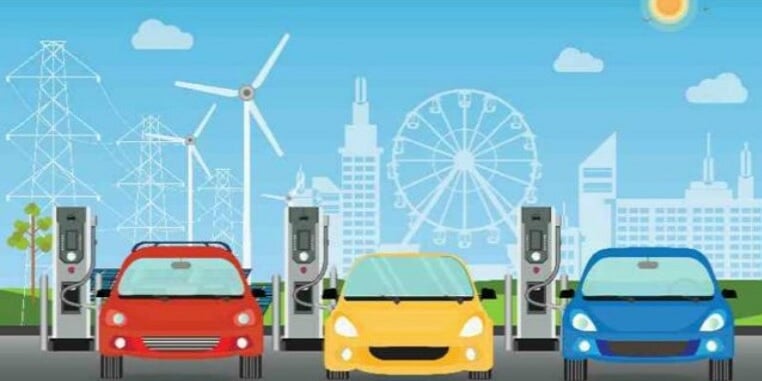4 ways to create an EV adoption strategy for government entities

Electric vehicles (EVs) are essential to reducing greenhouse gas emissions. However, the higher upfront costs of EVs and lack of charging infrastructure remain barriers to widespread adoption.
Fortunately, recent federal legislation provides significant funding and incentives to accelerate EV purchases and infrastructure deployment. The bipartisan Infrastructure Law and the Inflation Reduction Act together offer over $27 billion in federal funding specifically for these purposes.
To fully capitalize on these opportunities, government agencies need comprehensive strategies centered on stakeholder engagement, interagency collaboration, and equitable access. A thoughtful, methodical EV adoption strategy will ensure that the initiatives positively impact the community and the environment.
EV funding mechanisms
The Bipartisan Infrastructure Law and Inflation Reduction Act provides funding for various programs, including:
- $5 billion: National EV Infrastructure Formula Program
- $2.5 billion: Discretionary Grant Program for Charging and Fueling Infrastructure
- $5 billion: Clean School Bus Program
- $5.6 billion: Low- and No-Emission Transit Bus Program
The Inflation Reduction Act also provides funding in several forms, including:
- EV Tax Credit: $7,500 per vehicle
- Commercial EV Credit: Up to $7,000 for light duty and $40,000 for heavy-duty vehicles
- Greenhouse Gas (GHG) Reduction Fund: $27 billion
- EPA Rebates: $1 billion for heavy-duty trucks
- Neighborhood Access and Equity Grants: $4 billion for connectivity
EV adoption strategies
The Electrification Coalition recommends that government entities follow this four-step process to accelerate EV adoption.
1. Shaping public policies
The first step is to set EV adoption goals and establish policies for achieving them. For example, Illinois has set a goal that at least 60% of new passenger vehicles must be hybrid EVs and 15% must be EVs by 2025. New York has committed to a fully zero-emissions fleet by 2035. Nationally, all federal vehicle acquisitions by 2035 are to be electric.
Hitting these aggressive goals will require reviewing and updating policies that might prohibit adoption. For example:
- Updating building codes for EV charging
- Streamlining permitting to accelerate deployment
- Increasing charging accessibility in underserved areas
- Entering into public-private partnerships
- Creating EV-specific permitting
2. State and regional planning
Effective implementation will require significant coordination among government entities. Regional planning will be especially important in creating optimal charging locations.
Besides bringing together local, state, and regional government agencies, other organizations can help create a seamless process, such as:
- Metropolitan planning organizations and councils of governments, which coordinate transportation planning across jurisdictions and can facilitate regional EV charging approaches
- Clean Cities coalitions, which have expertise in alternative fuels and vehicles, and early coordination can open up funding opportunities
- State associations of counties/municipalities, which advocate for local government interests and can help localities shape supportive state policies
Building these relationships with jurisdictions can help align plans where possible, making funding more likely and reducing duplication of effort. For example, creating a regional EV charging roadmap can help ensure that urban and rural communities have equitable access to charging stations.
3. Community and stakeholder engagement
Establish consistent processes to identify key community stakeholders for input. Community engagement is essential to accelerate adoption. While governments can—and should—lead by example, getting buy-in from a broad cross-section of community members can help alleviate public concerns about spending and funding.
This needs to go beyond simple communication of ongoing initiatives. Implementation of a successful EV adoption strategy requires a true dialogue. Community feedback should be used to help shape plans and inform policy agendas.
4. Site planning for charging infrastructure
Before they can effectively launch an EV fleet and gain widespread public adoption, government entities must help facilitate the build-out of the charging infrastructure. The first step is to identify government-owned properties that meet siting criteria.
Site planning and coordination can take a considerable amount of time, so government entities need to start the planning process as soon as possible. Governments need a clear understanding of the process, from selecting sites to turning up the power and handling routing maintenance.
Most entities will contract with private groups to install, operate, and maintain EV charging stations. Government agencies can help connect these groups with incentives and funding opportunities.
Implementing EV fleet strategies
Once the groundwork of stakeholder input, policy updates, and site planning has been laid, government entities can begin transitioning their fleets to EVs.
Fleet assessment and procurement
Assess current fleet makeup and match up with job duties to identify which vehicles are priorities for electrification. Sourcewell’s cooperative contracts provide ready-to-use, competitively-sourced contracts to accelerate the procurement process.
Charging station installation
Analyze typical fleet usage and the number of charging stations required for regular use. Level 2 charging stations at central hubs for overnight charging work with DC fast chargers in key locations for charging on the go.
Utilization of fleet telematics
Fleet telematics should be included as part of the procurement process. It can monitor vehicle ranges and charging habits and alert when proactive maintenance is required. This technology can also be used to assess charging schedules and optimize routes.
Training and education
Training will be necessary for drivers and fleet technicians. There is currently a lack of trained mechanics to work on EVs, so ensuring that your staff is up to the task is crucial.
Sourcewell helps manage costs for an EV adoption strategy
Sourcewell’s cooperative contracts leverage bulk buying power from more than 50,000 government entities and educational facilities to provide cost savings. Contracts are available for EVs, accessories, charging infrastructure, and telematics.
To learn more about EV adoption strategies, download the complimentary Public Fleet Electrification Guide.
See how easy it is to get the EV fleet you need without the hassle, using Sourcewell’s cooperative purchasing program. Streamline the public procurement process by choosing from hundreds of suppliers already on contract. Sourcewell’s procurement experts competitively solicit and award contracts on behalf of 50,000 participating agencies in North America. Check out our EV contracts and more for free here.


